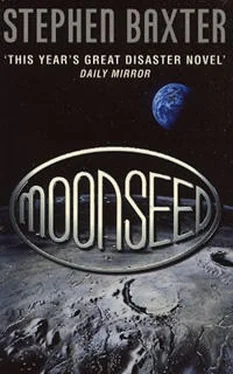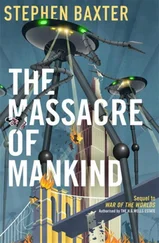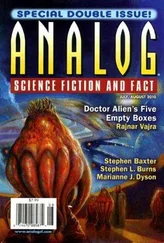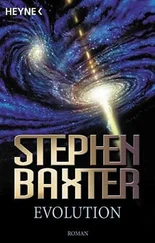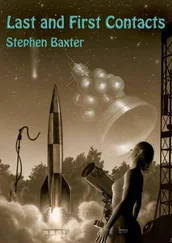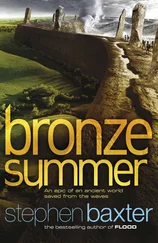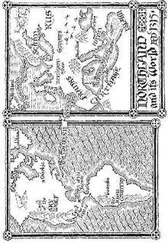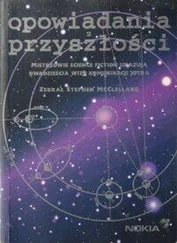But the sun-shadowed hemisphere was not truly dark, for it basked in the light of the Noviy Svet — the Russian-designed solettas, the huge mirror farms built and launched by Boeing and Kawasaki Heavy Industries, artificial suns which cast enough daylight over the shadowed half of the Moon to keep its new air from snowing out in the weeks-long night. The solettas worked well, and anyhow the engineers said the Spin-Up should be completed before the solettas reached the end of their design life.
Not that anybody was confident of predicting when that would be, since the solettas, grown from lunar rock, were the first large-scale application of Moonseed-derived technology.
She could see the cold deserts of the lunar poles, bone-white.
On the Moon, the weather was simple. Sunlight lifted masses of moist warm air over the equator; the air quickly dumped its moisture, in sometimes violent rainstorms, and, displaced by colder, lower layers of air, the hot air drifted to the poles. There it cooled and sank, dry and cold, creating deserts, and joined the circulation back to the equator.
So there you had it. The prevailing winds were hot, dry air coming out of the poles, deflected a little by the Moon’s sluggish spin, shaped and moistened by the bodies of water it passed, the maria and the great crater lakes.
On the Moon, there were no weather forecasters.
She couldn’t remember much of Earth, before the Bottleneck. She found it hard to understand how big it had been, so big there had been room for more than one air circulation cell per hemisphere, so big there had been room for too much weather. Bizarre.
Anyhow, the Moon’s North Pole was the site of something much more interesting than weather, as far as Nadezhda was concerned. It was from the Pole that the great deep-core drilling project had been initiated by the Americans: a thousand-mile shaft designed to reach all the way to the Witch in the Well, the ancient, shattered hive at the heart of the Moon which, until now, had only been visible by seismic probes and neutrino light. And nobody knew what treasures that would bring.
The Moon’s highlands and Farside were visibly peppered with circular crater lakes, glimmering in soletta light. The first oceans, which had pooled in the basins of the old maria, still glittered blue where they had formed, all over the hemisphere which was still called Nearside; but they had been shrinking steadily since then. The problem was drainage. The oceans evaporated, the water returning as rain; but every time rain fell on the highlands it got trapped in the high craters. As the Moon had been born dry, there was no natural drainage to return the water to the oceans, as on Earth.
So great channels were being dug, canals to restore the water to the oceans. Nadezhda could see Tycho-Nubium, for instance, a straight-line thread of blue light.
Thus, on the Moon, by the side of the canals with their huge waves and feathery pleasure-boats, the crystal cities glistened in the sun.
As she looked at the Moon’s surface now, it was predominantly blue and white, ocean and cloud, or the powder-grey or baked red of desert. Much of the Moon was still not much more habitable than it had been for Meacher and Bourne themselves. It would take some time for the green of life to show on the Moon.
It would come.
But the Moon would never be a shrunken twin of vanished Earth. The engineers” dreams would see to that. They could do a lot better.
There was a scheme to go further than Spin-Up. Perhaps the black hole wind from ruined Earth could be used to move the Moon: to the orbit of Jupiter, perhaps, where there were whole worlds full of frozen volatiles, waiting to be tapped…
Or even further, to the stars themselves.
But that was the future. For today, Nadezhda had work to do.
Nadezhda tipped herself up so she was facing Icarus, with the Sagan behind her.
“Sagan, I’m preparing to go in.”
We copy, Nadezhda.
She fired her thruster. Computer graphics started to scroll across the inside of her face plate, updating burn parameters. She was actually changing orbit here, and she would have to go through a full rendezvous procedure to reach Icarus.
The angle of the sun was changing, and the slanting light changed Icarus from a flat silhouette to a potato-shaped rock in space, fat and solid. Icarus was crumpled, split by ravines, punctured by craters of all sizes, the beat-up surface a record of this little body’s dismal, violent history. There was one massive crater that must have been a half-mile across, its walls spreading around the cramped horizon.
The rock was more than three miles long, spinning on its axis once every twenty hours. It was as black as coal dust. Icarus was a stony asteroid, its substance baked dry of water and other volatiles by a billion years of passes around the sun, here in the hot heart of the Solar System.
Primordial rock. Ideal resource for the Moonseed.
It was a decade now since Icarus had been deliberately implanted with Moonseed, by an automated probe. The purpose was to test experimental asimov circuits, to see if the Moonseed could be inhibited.
Well, since the asteroid hadn’t blown up, the asimov circuits seemed to have worked. And now, Nadezhda was here to find out what the Moonseed had built, at the heart of the asteroid. We know you can make solar sails. We know you can turn planets into black hole guns. Now let’s see what the hell else you can do…
Even now, nobody understood the Moonseed. But there were those who believed the Moonseed was not malevolent.
Look at the evidence. This hive thing crashes into a primordial Earth, that was probably too big anyhow. It creates a Moon, just big enough to kick up the geological stuff that enabled life to start up in the first place. Then, just when we’ve had time to get smart enough to survive it all — in fact, don’t forget, our intelligence, bringing the Moonseed to Earth, was the trigger for this happening — it takes Earth apart, gives us a tool kit to rebuild other worlds, and gives us a way to the stars…
This is no threat. The Moonseed is no Berserker. It’s a life-giver.
There were other unanswered questions.
Why had the destruction of Venus taken such a different course from Earth’s?
Why was Mercury spared? And Mars, come to that — after all, craft from Earth had landed on Mars before they reached Venus.
Maybe it was just accident. Or maybe it was design.
Or maybe the Moonseed, for all its power, was like plankton — the bottom of some cosmic food chain whose upper reaches humans couldn’t even glimpse.
Maybe. Maybe not. Nobody knew for sure. But as Earth receded in memory, there were more who were prepared to give the Moonseed the benefit of the doubt.
At a computer prompt, she prepared for her final burn. “Ready for Terminal Initiation.”
Copy that, Nadezhda.
One last time the thrusters fired, fat and full.
Coming up to your hundred yard limit.
“Copy that.”
She came to a dead stop, a hundred yards from the surface of Icarus. The asteroid’s complex, battered surface was like a wall in front of her. She felt no tug of gravity — Icarus’s G was a thousandth of the Moon’s — it would take her more than two minutes to fall in to the surface from here, compared to a few seconds on the Moon.
She was comfortable. The suit was quiet, warm, safe.
She blipped her cold-gas thrusters, and drifted forward a little more quickly. This wasn’t like coming in for a landing; it was more like approaching a cliff face which bulged gently out at her, its coal-like blackness oppressive.
She made out more detail, craters overlaid on craters down to the limit of visibility. She tweaked her trajectory until she was heading for the centre of a big crater, away from any sharp-edged walls or boulder fields.
Читать дальше
Конец ознакомительного отрывка
Купить книгу
